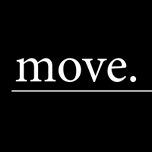The TMJ is the temporomandibular joint, and it connects your jaw bone with your skull on each side. Like all joints, it is important for each TMJ to have full range of movement and good muscle control.
We have a single jaw bone (the mandible) which attaches to the skull (at the temporal bone) on the left and right, this single jaw bone is therefore part of both of your TMJ’s.
This makes movement at one joint directly affect the other, so every one of its movements needs to be well controlled and coordinated by the muscles around it to allow symmetrical movement for good joint health.
Unique to the TMJ, a cartilage disc sits within the joint which helps protect it, similar to how cartilage in the knee joint works. This disc can sometimes become problematic.
Disorders in this area can result in many symptoms including:
These can often be the result of clenching and grinding your teeth due to stress or in your sleep at night. Your dentist may have noticed accelerated wearing of your teeth and in some cases, there is a need for a night guard to be worn. Additionally, other habits which cause muscle tightness and joint problems can also contribute.
In addition to your dentist’s treatment, Physiotherapy can be very helpful to resolve these symptoms.
The TMJ can be a very complex and specific issue to treat, that is generally not seen to by most Physiotherapists. At Move for Better Health™ you will be seen by a Physiotherapist with extensive knowledge and training in these problems. TMJ Treatment can involve hands on treatment, exercises, lifestyle changes, or dental treatment.
Treatment begins with an assessment to determine the dysfunction which is causing you pain. This includes an examination of your jaw, neck and manual testing of the TMJ.
Typically, treatment may include hands-on therapy, exercises for you to do at home and advice to ensure your usual activities and habits are not contributing to your problem. As treatment continues, we happily communicate with your Dentist and GP to update them on your progress.
It is likely that you will require four or five sessions of Physiotherapy treatment, but each individual is different and our recommended treatment plans vary depending on the findings from your initial assessment.
To book with one of our Physios who have additional training in TMJ treatment, you can:
Dietitian Role Description Move for Better Health is seeking a new dietetics provider for our clinics. We...Read More
At Move for Better Health, one of our key goals is to help you move more. We...Read More
At Move for Better Health, we understand that optimising your health over the life span can be...Read More

